Ryuichi Tadano
Programmable Spectral Filter Arrays for Hyperspectral Imaging
Sep 29, 2021
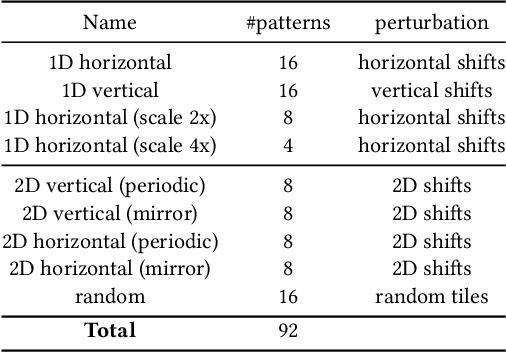

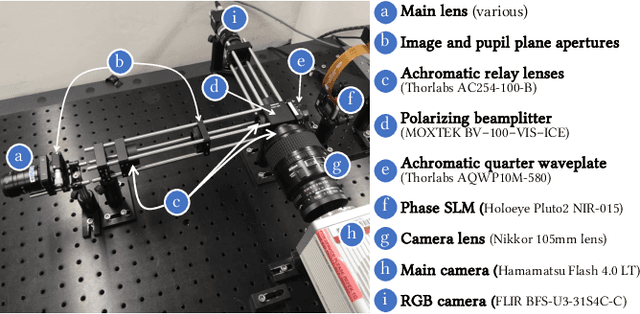
Abstract:Modulating the spectral dimension of light has numerous applications in computational imaging. While there are many techniques for achieving this, there are few, if any, for implementing a spatially-varying and programmable spectral filter. This paper provides an optical design for implementing such a capability. Our key insight is that spatially-varying spectral modulation can be implemented using a liquid crystal spatial light modulator since it provides an array of liquid crystal cells, each of which can be purposed to act as a programmable spectral filter array. Relying on this insight, we provide an optical schematic and an associated lab prototype for realizing the capability, as well as address the associated challenges at implementation using optical and computational innovations. We show a number of unique operating points with our prototype including single- and multi-image hyperspectral imaging, as well as its application in material identification.
Spatial Phase-Sweep: Increasing temporal resolution of transient imaging using a light source array
Dec 21, 2015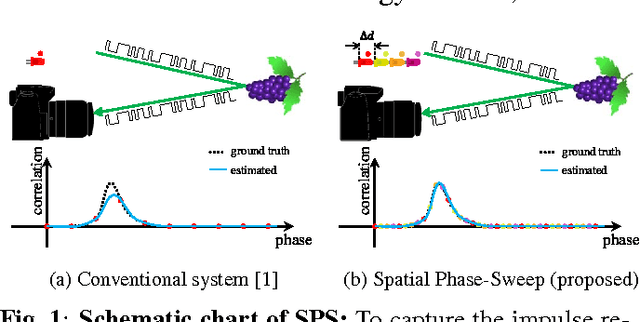
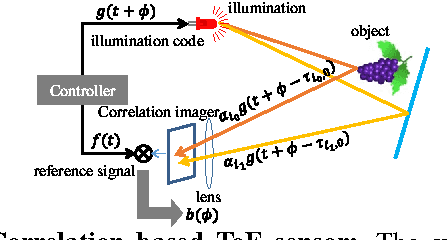

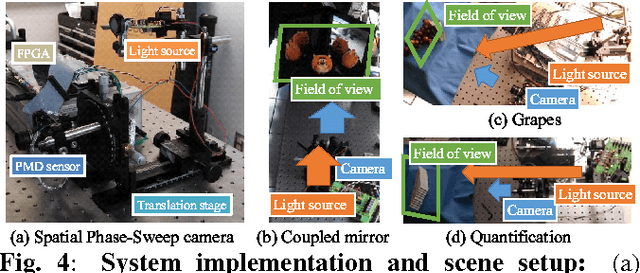
Abstract:Transient imaging or light-in-flight techniques capture the propagation of an ultra-short pulse of light through a scene, which in effect captures the optical impulse response of the scene. Recently, it has been shown that we can capture transient images using commercially available Time-of-Flight (ToF) systems such as Photonic Mixer Devices (PMD). In this paper, we propose `spatial phase-sweep', a technique that exploits the speed of light to increase the temporal resolution beyond the 100 picosecond limit imposed by current electronics. Spatial phase-sweep uses a linear array of light sources with spatial separation of about 3 mm between them, thereby resulting in a time shift of about 10 picoseconds, which translates into 100 Gfps of transient imaging in theory. We demonstrate a prototype and transient imaging results using spatial phase-sweep.
 Add to Chrome
Add to Chrome Add to Firefox
Add to Firefox Add to Edge
Add to Edge